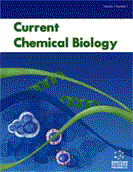Abstract
The flexible and efficient enantioselective synthesis of poison-frog alkaloids has been described using the highly stereoselective conjugate addition reactions as the key step. Several 5,8-disubstituted indolizidines and 1,4-disubstituted quinolizidines have been synthesized according to this strategy. Furthermore, 5,6,8-trisubstituted indolizidne type of poison-frog alkaloid 223A and unique tricyclic poison-frog alkaloid 205B have also been synthesized by sequential use of the above key conjugate addition reaction. Investigations of inhibitory effects of synthetic poison-frog alkaloids on neuronal nicotinic acetylcholine receptors have been conducted, and we found that most of the synthetic compounds showed inhibitory effects on the neuronal nicotinic acetylcholine receptors. Especially, the 5,8-disubstituted indolizidine 235B inhibited the α4 β2-neuronal nicotinic acetylcholine receptors in highly subtype-selective manner. These results suggested that the synthetic alkaloid 235B is a promising lead compound for the drugs designed to treat cholinergic disorders such as autosomal dominant nocturnal frontal lobe epilepsy (ADNFLE).
Keywords: Michael-type conjugate addition, indolizidine, quinolizidine, piperidone synthesis, nicotinic acetylcholine receptors (nAChRs)
Current Chemical Biology
Title: Synthesis of Poison-Frog Alkaloids and Their Pharmacological Effects at Neuronal Nicotinic Acetylcholine Receptors
Volume: 1 Issue: 1
Author(s): Naoki Toyooka, Hiroshi Tsuneki, Soushi Kobayashi, Zhou Dejun, Masashi Kawasaki, Ikuko Kimura, Toshiyasu Sasaoka and Hideo Nemoto
Affiliation:
Keywords: Michael-type conjugate addition, indolizidine, quinolizidine, piperidone synthesis, nicotinic acetylcholine receptors (nAChRs)
Abstract: The flexible and efficient enantioselective synthesis of poison-frog alkaloids has been described using the highly stereoselective conjugate addition reactions as the key step. Several 5,8-disubstituted indolizidines and 1,4-disubstituted quinolizidines have been synthesized according to this strategy. Furthermore, 5,6,8-trisubstituted indolizidne type of poison-frog alkaloid 223A and unique tricyclic poison-frog alkaloid 205B have also been synthesized by sequential use of the above key conjugate addition reaction. Investigations of inhibitory effects of synthetic poison-frog alkaloids on neuronal nicotinic acetylcholine receptors have been conducted, and we found that most of the synthetic compounds showed inhibitory effects on the neuronal nicotinic acetylcholine receptors. Especially, the 5,8-disubstituted indolizidine 235B inhibited the α4 β2-neuronal nicotinic acetylcholine receptors in highly subtype-selective manner. These results suggested that the synthetic alkaloid 235B is a promising lead compound for the drugs designed to treat cholinergic disorders such as autosomal dominant nocturnal frontal lobe epilepsy (ADNFLE).
Export Options
About this article
Cite this article as:
Toyooka Naoki, Tsuneki Hiroshi, Kobayashi Soushi, Dejun Zhou, Kawasaki Masashi, Kimura Ikuko, Sasaoka Toshiyasu and Nemoto Hideo, Synthesis of Poison-Frog Alkaloids and Their Pharmacological Effects at Neuronal Nicotinic Acetylcholine Receptors, Current Chemical Biology 2007; 1 (1) . https://dx.doi.org/10.2174/2212796810701010097
| DOI https://dx.doi.org/10.2174/2212796810701010097 |
Print ISSN 2212-7968 |
| Publisher Name Bentham Science Publisher |
Online ISSN 1872-3136 |
 15
15
- Author Guidelines
- Bentham Author Support Services (BASS)
- Graphical Abstracts
- Fabricating and Stating False Information
- Research Misconduct
- Post Publication Discussions and Corrections
- Publishing Ethics and Rectitude
- Increase Visibility of Your Article
- Archiving Policies
- Peer Review Workflow
- Order Your Article Before Print
- Promote Your Article
- Manuscript Transfer Facility
- Editorial Policies
- Allegations from Whistleblowers
- Announcements
Related Articles
-
Methylphenidate (Ritalin): What Makes it so Widely Prescribed During the Last 60 Years?
Current Drug Therapy Spatio-Temporal Fluctuations of Neural Dynamics in Mild Cognitive Impairment and Alzheimer’s Disease
Current Alzheimer Research Human Endometrial and Ovarian Cancer Cells: Histone Deacetylase Inhibitors Exhibit Antiproliferative Activity, Potently Induce Cell Cycle Arrest, and Stimulate Apoptosis
Current Medicinal Chemistry Monocyclic and Fused Azines and Azoles as Histamine H<sub>4</sub> Receptor Ligands
Current Medicinal Chemistry Ionotropic Glutamate Receptor Biology: Effect on Synaptic Connectivity and Function in Neurological Disease
Current Medicinal Chemistry Molecular Biology of T-Type Calcium Channels
CNS & Neurological Disorders - Drug Targets Alzheimer’s Disease and Autistic Spectrum Disorder: Is there any Association?
CNS & Neurological Disorders - Drug Targets MicroRNA Therapeutics in Neurological Disease
Current Pharmaceutical Design Diagnostic Boundaries of Autism Disorder Vs Pervasive Developmental Disorder Nos Comparative Observational Study and Literature Review
Current Clinical Pharmacology Involvement of Cannabinoids in Cellular Proliferation
Mini-Reviews in Medicinal Chemistry GABA System as a Target for New Drugs
Current Medicinal Chemistry Natural Plants with Antiepileptic Activity-The Present and Future Perspectives
The Natural Products Journal VEGF Signaling Regulates Cofilin and the Arp2/3-complex within the Axonal Growth Cone
Current Neurovascular Research Sublethal Total Body Irradiation Leads to Early Cerebellar Damage and Oxidative Stress
Current Neurovascular Research The Glial Sodium-Calcium Exchanger: A New Target for Nitric Oxide- Mediated Cellular Toxicity
Current Protein & Peptide Science An Update on Clinical Drug Interactions with the Herbal Antidepressant St. Johns wort
Current Drug Metabolism GABAB Receptors as Potential Therapeutic Targets
Current Drug Targets - CNS & Neurological Disorders Neurogenic Drugs and Compounds to Treat CNS Diseases and Disorders
Central Nervous System Agents in Medicinal Chemistry Psychomotor Seizure Screening and in vitro Neuroprotection Assay of Hydrazones Derived from 2-Acetyl Thiophene
Central Nervous System Agents in Medicinal Chemistry ABC Transporters: Unvalidated Therapeutic Targets in Cancer and the CNS
Anti-Cancer Agents in Medicinal Chemistry

















.jpeg)








